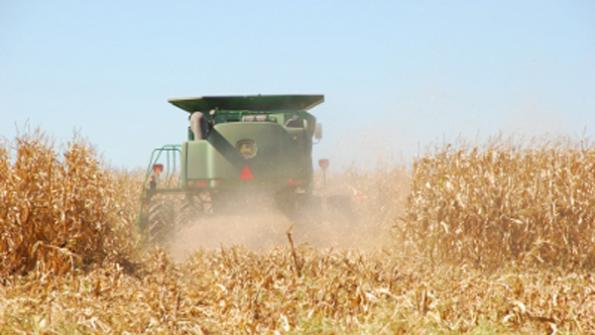September 19, 2016

Above normal temperatures during the second half of the growing season in most of Minnesota has allowed the 2016 corn and soybean crop in many areas to either reach maturity, or be very close to maturity, by late September. Most of the early-planted corn hybrids have now reached physiological maturity and is drying down, while some later planted corn may need a bit more time to reach desired kernel moisture content for harvest. Most soybeans are now turning color and dropping leaves, with full-scale soybean harvest ready to begin in many areas.
A total of 3.22 inches had been recorded for the current month, as of Sept. 15, at the University of Minnesota Research and Outreach Center at Waseca. The normal rainfall for the entire month of September at Waseca is 3.67 inches. The Research Center at Waseca received 11.7 inches of rainfall in August, which was the second wettest August in history, and was just shy of the record monthly rainfall in 1924.
The very wet August followed the second wettest July in history at Waseca, with 8.93 inches of rainfall recorded. This brought the two-month total precipitation for July and August at Waseca to 20.63 inches, which exceeded the previous two-month precipitation record at Waseca by over 3 inches, which was set in 1979.
One concern with this year’s harvest in many portions on Southern Minnesota and Northern Iowa is the very wet field conditions that exist across the region. Heavy rains in many areas during the week of Sept. 12-16 have resulted in standing water or totally saturated soils in many locations.
Rainfall amounts varied from slightly over one inch to over four inches across South Central and Southwest Minnesota during the week. If we continue to see numerous, significant rainfall events in the region, the wet field conditions could become a concern for timely and efficient harvest of corn and soybeans.
Stalk quality and strength could become another major concern with the 2016 corn crop in many areas, given the continued saturated soil conditions that exist in many areas. This type of soil conditions can also be very favorable for the development of root rot and stalk rot diseases in corn, which could result in more lodging, as well as increased harvest losses.
The very warm late growing season, and rapid maturity process for corn, is also likely to lead to weakening of stalks in some corn hybrids across the region. The corn that with deteriorating stalk quality could be very susceptible to damage from strong winds later this Fall, which could reduce yields. Growers in affected areas are encouraged to scout their fields for potential stalk quality issues, and adjust their 2016 corn harvest schedule accordingly.
Crop development in many areas of the state are much more advanced in the 2016 crop year, as compared to a normal year, due to the above normal growing degree units (GDU’s) that have been accumulated since May 1.
As of Sept. 15, a total of 2,601 GDU’s had been accumulated during the 2016 growing season at the U of M Research Center at Waseca. That level of GDU accumulation is more than 10 percent above the normal 2,320 GDU accumulation on that date. The 2016 mid-September GDU accumulation is about 130 GDU’s higher than the long-term average GDU accumulation at Waseca on Sept. 30.
Corn is considered to have reached physiological maturity once it is in the “black layer” stage. Some of the earlier planted corn in Southern Minnesota had already reached this stage by Sept. 15, and most corn that was planted on a timely basis should reach the “back layer” stage by the end of September. There is very little concern for damage from an earlier than normal frost in most areas of the Upper Midwest in 2016.
Once corn reaches maturity or “black layer”, it is usually at about 30-32 percent moisture, and then begins to dry down naturally in the field. Some earlier planted, shorter season hybrids of corn were reported at a moisture content of 23-26 percent kernel moisture in mid-September; however, most corn is still at 25-30 percent moisture or higher. Ideally, corn needs to be dried down to about 15-16 percent moisture for safe storage in on-farm grain bins until next Spring or Summer.
If stalk strength is solid, and the corn is standing good, most producers will want to allow for more natural dry-down in field, in order to save on corn drying costs. However, if the corn is starting to lodge, or stalk breakage is occurring, farm operators will likely want to harvest corn that has reached maturity, once the field conditions are fit.
About the Author(s)
You May Also Like




